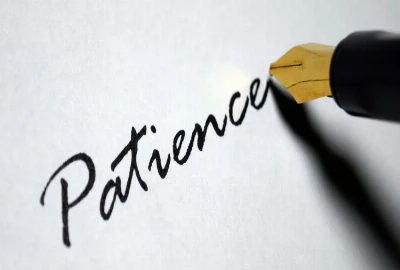Streaming Saturation: Are We Hitting Peak Platform Fatigue?

The streaming revolution began as a bold challenge to cable television, offering viewers the freedom to watch what they wanted, when they wanted, without being tied to rigid broadcast schedules. Netflix was the first true pioneer, turning the model of physical DVD rentals into an on-demand entertainment powerhouse. Its success inspired a wave of competitors—Amazon Prime Video, Hulu, Disney+, HBO Max, and countless niche platforms—each fighting for their slice of the market.
While early adopters welcomed this shift as a way to escape expensive cable bundles, the sheer number of services available today has created a different kind of problem. Instead of saving money, many households now juggle multiple subscriptions, each with exclusive content that can’t be found elsewhere.
The Promise of Choice
Streaming platforms initially positioned themselves as consumer-friendly disruptors. They highlighted lower costs, commercial-free viewing, and curated libraries tailored to modern viewing habits. This was a refreshing contrast to cable TV’s expensive bundles, limited control, and constant advertising.
The Competitive Gold Rush
Once Netflix proved the streaming model’s profitability, traditional media companies rushed in. Disney pulled its content to launch Disney+, WarnerMedia debuted HBO Max, and NBCUniversal created Peacock. Even niche players—from anime-focused Crunchyroll to sports-driven ESPN+—entered the fray. The result? Viewers are now faced with dozens of platforms competing for attention.
When Too Much Becomes Too Much
The promise of choice has turned into a paradox of excess. Instead of feeling empowered, many viewers feel overwhelmed. As the landscape continues to fragment, people are asking whether we’ve reached a tipping point: peak streaming saturation.
Subscription Overload: The Cost of Content Fragmentation

With so many platforms demanding monthly fees, streaming is no longer the budget-friendly alternative it once was. What started as a $9.99 Netflix subscription has evolved into a patchwork of expenses that, when combined, often exceed the cost of traditional cable.
Rising Costs for Viewers
Netflix now offers tiered plans, Disney+ has raised its prices multiple times, and even smaller platforms have introduced premium tiers. Add-ons like live sports packages or ad-free upgrades make monthly bills balloon quickly. Consumers are increasingly realizing that the “cutting the cord” movement has become financially unsustainable.
The Exclusivity Dilemma
Every major service is chasing exclusivity—locking beloved shows and blockbuster movies behind paywalls. Fans who want access to Marvel, Star Wars, Game of Thrones, or live sporting events are forced to subscribe to multiple platforms. This exclusivity model, while profitable for companies, places an unfair burden on viewers.
The Return of Bundling
Ironically, the industry seems to be circling back to cable-like bundles. Disney offers packages that combine Disney+, Hulu, and ESPN+. Telecom companies are offering streaming bundles as incentives. This raises the question: are we simply repackaging cable for a digital era under a new name?
Decision Fatigue: Too Many Options, Too Little Time

Beyond the financial strain, streaming saturation also creates mental strain. With endless content libraries and countless platforms, choosing what to watch can feel more like work than relaxation.
The Psychology of Choice Overload
Studies show that when faced with too many options, people struggle to make decisions and often feel less satisfied with their choices. Streaming exemplifies this paradox. Hours can be wasted scrolling through recommendations, only to give up or rewatch a familiar show.
Algorithm Anxiety
Streaming services lean heavily on algorithms to recommend content, but these systems don’t always work as intended. Instead of simplifying choices, they often recycle the same suggestions, pushing shows or genres viewers aren’t interested in. This repetitive loop increases frustration rather than reducing it.
Nostalgia and Comfort Viewing
As a coping mechanism, many viewers retreat into rewatching old favorites instead of exploring new releases. That’s why shows like The Office, Friends, and Grey’s Anatomy consistently dominate streaming charts, even years after ending their original runs. The abundance of new content ironically fuels demand for the familiar.
The Business Side: Profitability vs. Sustainability

Streaming saturation isn’t just a consumer problem—it’s a business dilemma. While platforms chase growth, many are struggling to turn consistent profits.
The Content Arms Race
Billions of dollars are being spent annually on original content. Netflix’s investment in original programming is legendary, but competitors are quickly matching or even surpassing it. This has created an unsustainable arms race where only the biggest players can survive long term.
Subscriber Churn
High churn rates are another challenge. Unlike cable contracts, streaming subscriptions are easy to cancel. Viewers often sign up to binge a show, then drop the service until another big release comes along. This unpredictability makes revenue difficult to stabilize.
Consolidation on the Horizon
Industry experts predict mergers and acquisitions will reshape the market. Smaller platforms may be absorbed by larger players, while niche services will need to partner or bundle to survive. Just as the streaming boom fragmented the industry, consolidation may once again bring it full circle.
Signs of Platform Fatigue: How Viewers Are Reacting

The early excitement around streaming has cooled, and signs of fatigue are becoming harder to ignore.
Cutting Back on Subscriptions
Surveys show that more households are “subscription cycling”—rotating between platforms rather than maintaining multiple at once. This trend is a direct response to rising costs and oversaturation.
Piracy Making a Comeback
Ironically, piracy is resurging as frustrated viewers look for cheaper, consolidated alternatives. When content is locked behind too many paywalls, piracy regains appeal as a one-stop solution.
Demand for Simplicity
Consumers are voicing a clear demand: simplicity and value. Whether through bundled services, free ad-supported streaming (FAST platforms like Pluto TV), or integrated viewing hubs, people want a streamlined experience that doesn’t drain their wallets or mental energy.
The Future of Streaming: Where Do We Go From Here?

Streaming isn’t going away, but the industry must evolve to address viewer fatigue. The future will likely blend innovation, consolidation, and consumer-first strategies.
Ad-Supported Models
Free, ad-supported streaming services are gaining traction as an alternative to subscription overload. Platforms like Tubi, Pluto TV, and Amazon Freevee offer libraries without monthly fees, with advertisers footing the bill.
Smarter Bundling and Partnerships
Consolidated bundles—whether through telecoms, entertainment conglomerates, or cross-platform partnerships—may become the norm. This could recreate the “all-in-one” feel that consumers miss without reverting entirely to cable’s rigid structure.
Personalized and Immersive Experiences
The next wave may focus less on quantity and more on personalization. Expect more curated experiences, AI-driven recommendations, and even interactive storytelling formats to keep audiences engaged.




